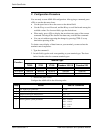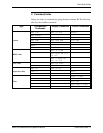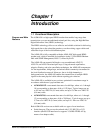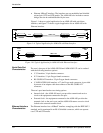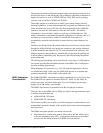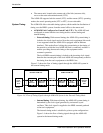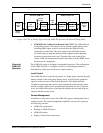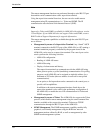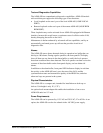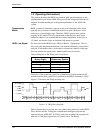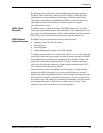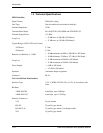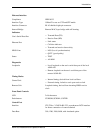
Introduction
1-4 ASMi-450 Installation and Operation Manual
• The remote unit, located at the remote end of the link (customer side),
serves as the network termination unit (NTU).
The ASMi-450 supports both the central (LTU) and the remote (NTU) operating
modes; the actual operating mode (LTU or NTU) is user-selectable.
System Timing
The ASMi-450 offers selectable timing options, which enable the distribution of
timing over the HDSL system, from the central office to the remote end.
• ASMi-450 Unit Configured as Central Unit (LTU). The ASMi-450 unit
configured as central unit has two timing modes: external timing and
internal timing.
àExternal timing. With external timing, the ASMi-450 system timing is
locked to the clock signal received from the user's equipment (this mode
is not supported when the ASMi-450 is equipped with an Ethernet
interface). This mode allows locking the system timing to the timing of
the network to which the local ASMi-450 unit is connected, and thus it
enables providing the network timing to the equipment on the
customer's premises.
The local HDSL transmit timing is locked to the incoming clock signal,
therefore the transmit path of the local ASMi-450 transparently transfers
the timing from the user's equipment to the HDSL line.
Figure 1-3 shows the flow of timing signals through the ASMi-450 system in
the external timing mode.
Figure 1-C. Flow of Timing Signals through ASMi-450 System in the External Timing Mode
àInternal timing. With internal timing, the ASMi-450 system timing is
determined by the clock signal generated by an internal crystal
oscillator. This clock signal is supplied to the HDSL transmit path and
to the user's equipment.
The internal timing mode is suitable for point-to-point configurations.
Figure 1-4 shows the flow of timing signals through the ASMi-450
system in the internal timing mode.
CENTRAL ASMi-450
User
Interface
REMOTE ASMi-450
HDSL Line
Timing
Source
HDSL Line
Interface
HDSL Line
Interface
User
Interface
Remote
User's
DTE
Local
User's
DTE





